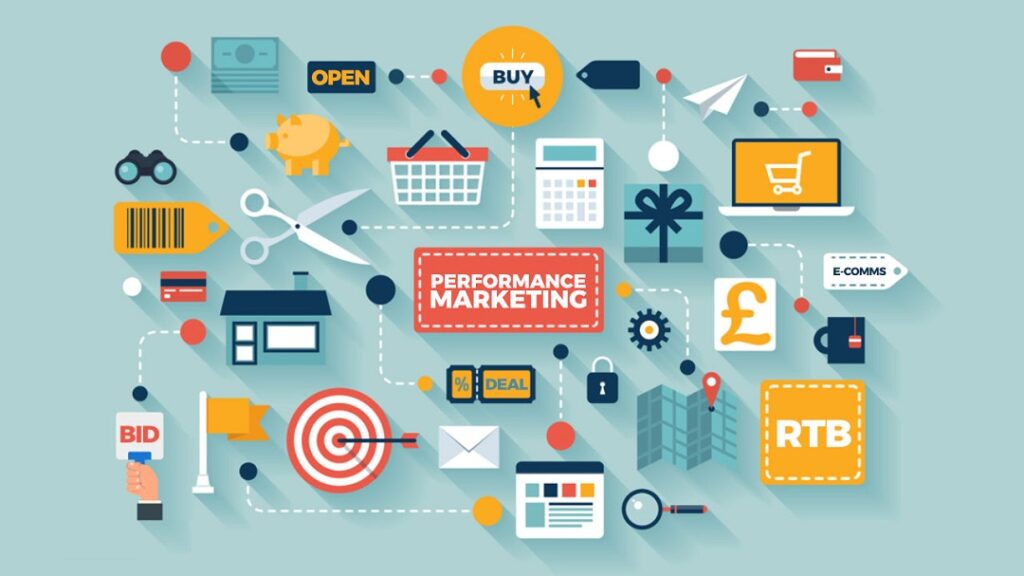Imagine a marketing strategy where you only pay for results – sounds too good to be true, right? Welcome to the world of performance marketing. Unlike traditional advertising methods that focus on impressions or clicks, performance marketing is all about driving tangible outcomes, whether it’s leads, sales, or other desired actions. But what exactly is performance marketing, and how does it work? Let’s dive in and find out.
Unveiling Performance Marketing
The Art of Paying for Performance
Performance marketing is a digital marketing strategy that focuses on driving specific actions or behaviors, such as clicks, leads, or sales. Unlike traditional advertising, where advertisers pay for ad space regardless of the results, performance marketing operates on a pay-for-performance model, where advertisers only pay when a desired action is completed.
Precision Targeting and Measurement
At the heart of performance marketing is precision targeting and measurement. By leveraging data and analytics, advertisers can identify and target specific audiences likely to take the desired action. Whether it’s making a purchase, signing up for a newsletter, or downloading an app. Advanced tracking and attribution tools allow advertisers to measure the effectiveness of their campaigns accurately and optimize performance in real-time.
The Mechanics of Performance Marketing
Affiliate Marketing
One of the most common forms of performance marketing is affiliate marketing, where advertisers partner with third-party affiliates to promote their products or services. Affiliates earn a commission for each sale or lead they generate, incentivizing them to drive quality traffic and conversions for the advertiser.
Pay-Per-Click (PPC) Advertising
PPC advertising is another key component of performance marketing, allowing advertisers to bid on keywords and display ads to users actively searching for their products or services. Advertisers only pay when users click on their ads, making PPC an efficient and cost-effective way to drive targeted traffic and conversions.
The Benefits of Performance Marketing
Cost-Effective Advertising
One of the primary benefits of performance marketing is its cost-effectiveness. By only paying for actual results, advertisers can maximize their return on investment (ROI) and minimize wasted ad spend. This makes performance marketing particularly appealing for businesses with limited marketing budgets or those looking to optimize their advertising dollars.
Scalable and Flexible
Performance marketing offers unparalleled scalability and flexibility, allowing advertisers to adjust their campaigns in real-time based on performance metrics and market conditions. Whether it’s increasing ad spend during peak seasons or refining targeting criteria to reach a more qualified audience, performance marketing enables advertisers to adapt quickly to changing circumstances and maximize results.
FAQs (Frequently Asked Questions)
Is performance marketing suitable for small businesses?
Yes, performance marketing can be particularly beneficial for small businesses with limited marketing budgets. Its pay-for-performance model allows businesses to minimize risk and only pay for actual results, making it a cost-effective option for driving targeted traffic and conversions.
How do I measure the success of my performance marketing campaigns?
The success of performance marketing campaigns can be measured using various key performance indicators (KPIs), including conversion rate, return on ad spend (ROAS), and cost per acquisition (CPA). By tracking these metrics, advertisers can assess the effectiveness of their campaigns and make data-driven decisions to optimize performance.
What types of actions can be tracked in performance marketing?
Performance marketing can track a wide range of actions, including clicks, leads, sales, app downloads, and form submissions, among others. The specific actions tracked depend on the objectives of the campaign and the desired outcomes of the advertiser.
How do I get started with performance marketing?
To get started with performance marketing, advertisers should first define their campaign objectives, target audience, and key performance metrics. They can then select the appropriate channels and tactics, such as affiliate marketing, PPC advertising. Or influencer partnerships, to reach their goals.
What role does data play in performance marketing?
Data plays a crucial role in performance marketing, from audience segmentation and targeting to campaign optimization and measurement. By leveraging data and analytics, advertisers can make informed decisions, optimize their campaigns in real-time, and drive better results.
Conclusion
Performance marketing offers a highly effective and efficient way for advertisers to drive tangible results and maximize their return on investment. By focusing on outcomes rather than impressions or clicks, performance marketing enables advertisers to target specific audiences, measure campaign effectiveness accurately, and adapt quickly to changing market conditions. With its cost-effective, scalable, and flexible approach, performance marketing continues to be a cornerstone of modern digital advertising strategies.


